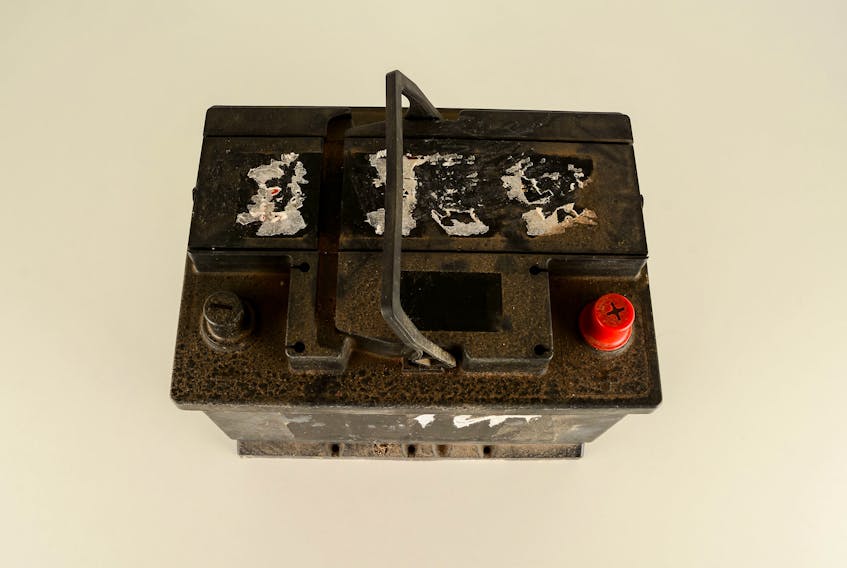This is the time of year when many do-it-yourselfers prepare their vehicles for winter. During this process they change tires, oil, and check fluids, topping them up or replacing them. This involves some serious environmental issues.
While exhaust emissions are becoming less of an issue, there are other automobile-related environmental issues, principally the disposal of used oil, tires, batteries and antifreeze. Each of these raises specific problems.
Millions of scrap tires are lying around in stockpiles, creating a serious risk of fire and pollution. The lead and acid in automotive batteries has been directly linked to the deaths of children and animals. Used oil leaking into ground water supplies is blamed for as much as 40 per cent of the pollution of harbours and waterways in North America.
The common solution is to encourage collection and disposal under controlled conditions that create the least impact on the environment. There are systems in place at retailers who sell these products and/or provide related service, to dispose of these harmful products responsibly. In many communities there are incentives in place for consumers to take their old tires, batteries, motor oil and antifreeze to an approved location for disposal.
But there are still a number of consumers who do much of their own service, who change the oil, tires, anti-freeze and batteries in their vehicles for themselves. If they are not attracted by the financial incentives to return these products to an approved location, perhaps a brief look at the reasons to do so will convince them.
OIL

This vital fluid is a lubricant, a coolant and a cleaner — arguably the most critical service item in a vehicle. But it is also extremely harmful to the environment, especially if allowed to get into the ground. The California Integrated Waste Management Board said recently that “used motor oil poses the greatest environmental risk of all auto fluids.”
The U.S. Geological Service says the United States generates 1.2 billion gallons of used motor oil each year and approximately 13 per cent of that is disposed of improperly. The EPA says almost 60 per cent of motor oil changes in that country are performed by consumers and each year they “throw away enough used motor oil to fill 120 supertankers.”
Oil dumped on the ground, down the drain or thrown into the garbage will eventually seep into the ground water where it finds its way into harbors, rivers, lakes, streams and waterways. The EPA says used oil from one single oil change can contaminate one million gallons of drinking water.
Dispose of your used oil — and filter — responsibly. Take it in a properly sealed clear plastic container to a service station or recycle facility.
TIRES
There are millions of scrap tires in hundreds of stockpiles across the country, creating the risk of fires and resultant pollution. Virtually all jurisdictions have provisions for disposing of old tires.
BATTERIES
The EPA says the standard lead acid battery contains 9.1 kg of lead. It says 75 to 80 per cent of the 1.28 million metric tonnes of lead consumed in the U.S. each year is attributable to the manufacture of lead acid batteries. If you replace your car battery yourself, dispose of the old one properly — take it back to the place where you bought the new one and they should take care of it for you. Up to 60 per cent of the lead used in new batteries comes from old recycled batteries. Both the recycling of old and manufacturing of new lead acid batteries has shifted to the Third World, but tossing one into your backyard or a nearby ditch can obviously have drastic results.
ANTIFREEZE
Anti-freeze contains large amounts of ethylene or propylene glycol used to lower the freezing point. Ethylene glycol is highly toxic. It only takes a few tablespoons to seriously jeopardize the life of a small child or animal. While propylene glycol is not as toxic, it can still cause problems in sufficient quantity. Ethylene glycol has a sweet flavour and propylene glycol is bitter making it less attractive to animals or children that may find it in a driveway. The trade journal Aftermarket Business reports that more than 800 million gallons of antifreeze is produced each year globally. It is estimated that 25 to 50 per cent of this ends up being disposed of improperly with much of this due to consumers pouring it down a drain. Clean up spills and return old anti-freeze to a recycling or other approved center.
RELATED:









